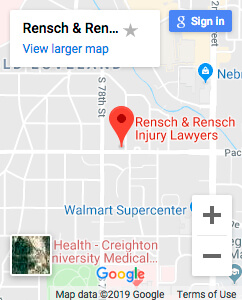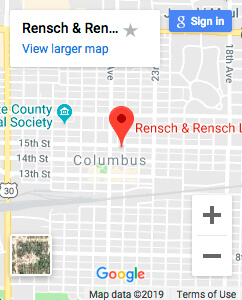How Can I Avoid Rear-End Accidents? 5 Tips from an Omaha Personal-Injury Attorney
A rear-end accident can happen in less than a second, but the effects can last a lifetime. Whiplash, traumatic brain injuries, paralysis, head wounds and broken bones are common in rear-end collisions.

Several factors can contribute to a wreck, but driver error causes most accidents. Distracted driving, in particular, contributes to a significant number of rear-end collisions. According to the AAA Foundation for Traffic Safety, 16 percent of all deadly crashes involve distracted drivers.
Fortunately, you may be able to avoid becoming a statistic by taking steps to prevent rear-end accidents. The next time you get behind the wheel, keep these tips in mind:
- Keep your vision down the road;
- Avoid distracted driving;
- Maintain a safe following distance;
- Slow down gradually when approaching red lights and stop signs;
- And check your mirrors regularly.
No matter how safe you drive, you cannot expect other motorists to behave responsibly. If you were injured in a crash that another driver caused, contact Rensch & Rensch Law. An Omaha personal-injury attorney can help you pursue the maximum settlement for medical bills, time off work and other losses.
Call 1-800-471-4100 today to schedule a free initial consultation. You can also visit USAttorneys.com to learn about injury claims.
Here are five tips that can help you avoid a rear-end collision:
- Keep your vision down the road.
According to Wheels.ca, you may be able to avoid a rear-end crash by keeping your vision far enough ahead. This will give you enough time to brake if the leading vehicle stops suddenly. Also, you will be able to come to a gradual stop, which can prevent a rear-end accident with the car behind you.
- Avoid distracted driving.
Distracted driving is one of the leading causes of rear-end crashes. Common examples include:
- Using a cell phone;
- Eating and drinking;
- Reaching across the vehicle;
- Misbehaving passengers;
- And looking at outside distractions.
Before you start the engine, turn off your cell phone, or place it in the glove box. Never eat or drink behind the wheel, and do not reach across the vehicle to grab an item. New drivers should limit the number of passengers they carry, and if you notice an accident scene, avoid the temptation to gawk.
- Maintain a safe following distance.
In ideal weather conditions, passenger-vehicle drivers should maintain three seconds of distance between their cars and leading vehicles. In rain, fog and other adverse weather, double this distance. This will help you avoid crashing into the leading vehicle, or coming to an abrupt stop and getting hit by the car behind you.
- Slow down gradually when approaching red lights and stop signs.
You never know when other drivers are distracted. If you stop abruptly and the motorist behind you is not paying attention, a rear-end collision is likely. When approaching a red light or stop sign, be sure to hit your brakes gradually.
- Check your mirrors regularly.
Defensive driving is one of the most effective strategies for avoiding crashes. Always try to anticipate the actions of other motorists. Before coming to a stop or slowing down for a turn, check to see if the vehicle behind is tailgating you. If so, tap your brakes to warn the driver that you are stopping. In some cases, it is better to miss your turn than risk getting in a rear-end accident.
If you were injured by a negligent driver in Nebraska, contact Rensch & Rensch Law to discuss your legal options. An Omaha accident attorney can help you avoid mistakes such as signing a general release or accepting a low settlement. Schedule a free consultation today by calling 1-800-471-4100.


